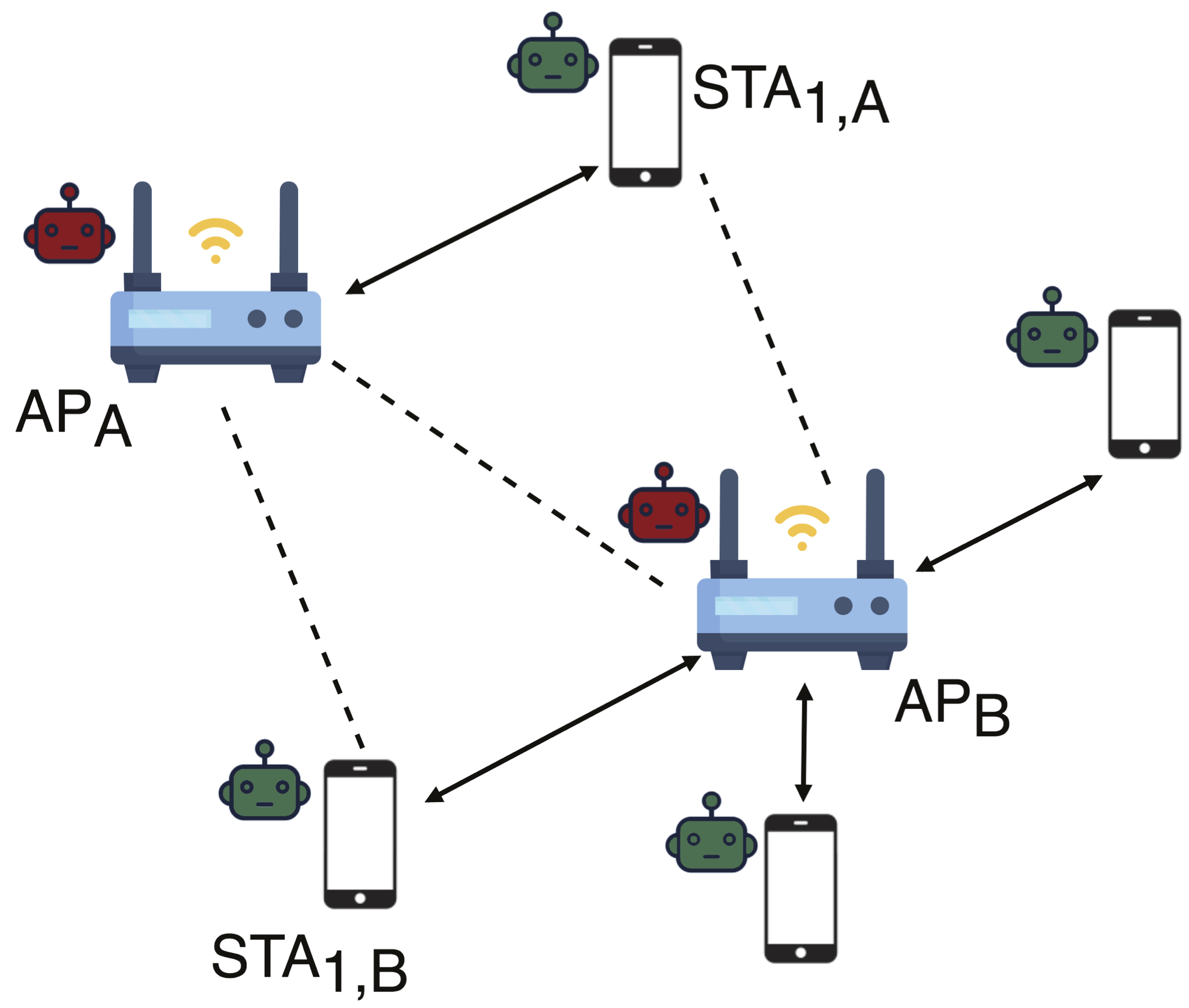Machine learning to optimize the configuration of Wi-Fi networks with multiple access points
Machine learning to optimize the configuration of Wi-Fi networks with multiple access points
Presented in a paper by Álvaro López Raventós and Boris Bellalta, members of the Wireless Networking research group and published in Computer Networks, with the aim of understanding how these techniques respond to changes in non-stationary situations.

A study recently published in Computer Networks by Álvaro López Raventós and Boris Bellalta, presents a study on the application of machine learning techniques to optimize the configuration of Wi-Fi networks consisting of multiple access points. The authors are members of the Wireless Networking research group at the Department of Information and Communication Technologies (DTIC) at UPF. More specifically, the study is carried out for two different processes running simultaneously on the network: channel selection by access points and the association between users and access points. One of the important points of the study of non-stationary situations in order to understand how these machine learning techniques respond to changes.
One of the important points of the study of non-stationary situations in order to understand how these machine learning techniques respond to changes
“Using Reinforcement Learning techniques, one of the multiple branches of Machine Learning, we provide both access points and users with the necessary tools to perform self-learning, which is based on sequentially learning which of the possible actions returns the best result”, López and Bellalta explain. “To this end, we use an algorithm called Thompson Sampling, which performs a smart scan of the various possible actions until it finds the one that gives the best result”, they add.
The article presents a complex framework which defines two types of “players” (access points and users), which, within the same environment, interact with each other via the same set of resources. As explained in this paper, these types of environments can be considered as “adversaries”, since the actions taken by one player are influenced by the actions that the other players have taken previously.
Regarding access points, each action corresponds to a frequency channel. While for users each action will correspond to an access point to which to associate. Consequently, the aim of the access points will be to find the emptiest channel, while for the users their target will be to find the freest access point.
Machine learning techniques may lead to changing how we have done things to date
Finally, the authors present the results obtained for different scenarios, considering both stationary and non-stationary environments, and for different network requirements (increase in traffic, the number of access points, number of users). “As we have seen, the results, when we apply machine learning mechanisms, improve significantly in reference to those obtained when we applied a standard default configuration, but above all show the ability of the network to adapt to complex situations”, López and Bellalta highlight.
One aspect that the authors emphasize is that the use of these machine learning mechanisms can achieve the same level of network performance with far fewer resources than would otherwise be required. This obviously has an impact on network cost and maintenance, and is a new and tangible example that shows how the use of machine learning techniques may lead to changing how we have done things to date.
Reference article:
Álvaro López Raventós, Boris Bellalta (2020), “Concurrent Decentralized Channel Allocation and Access Point Selection using Multi-Armed Bandits in multi BSS WLANs”, Computer Networks, published in the advanced online edition on 24 June https://doi.org/10.1016/j.comnet.2020.107381
